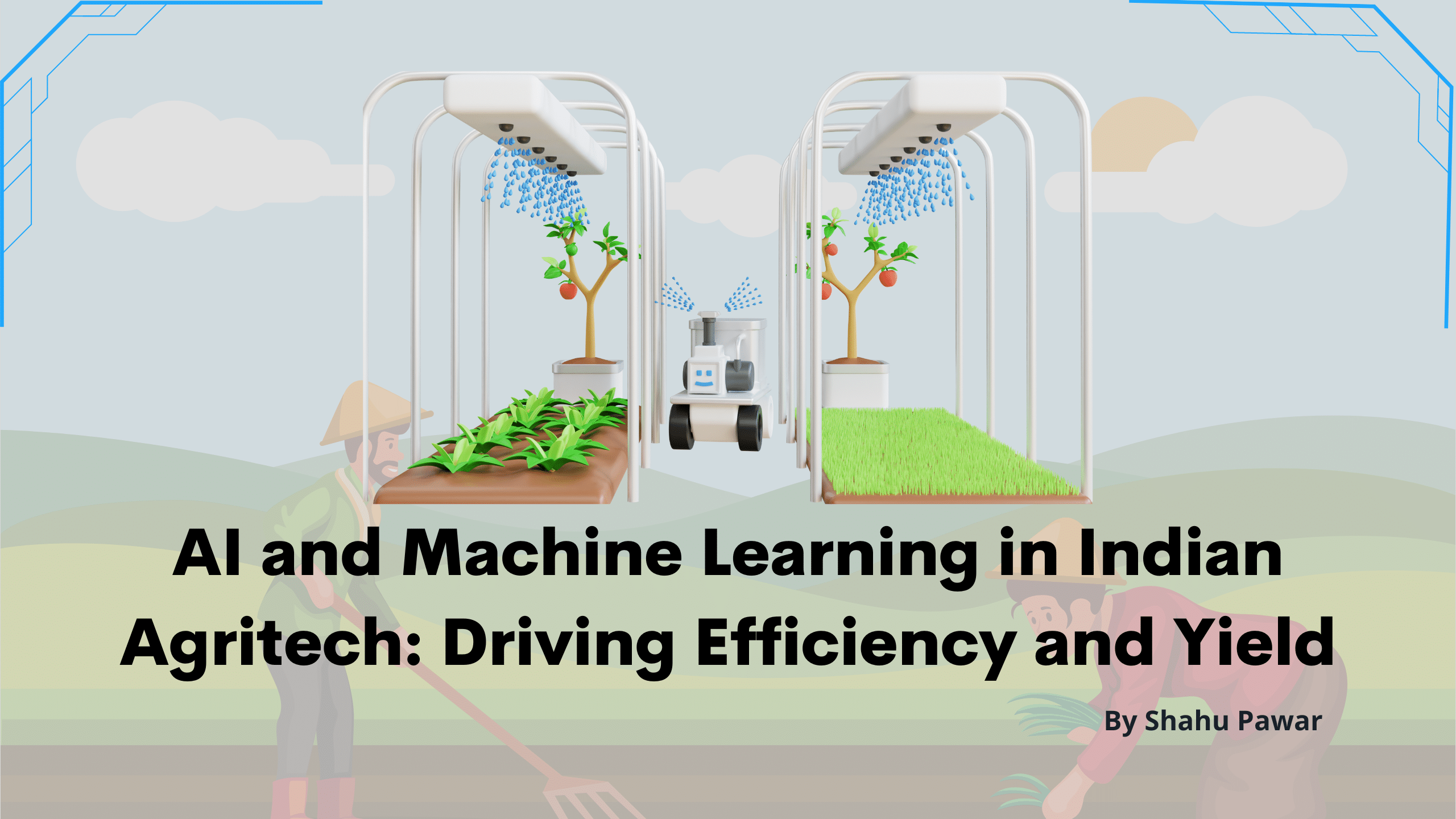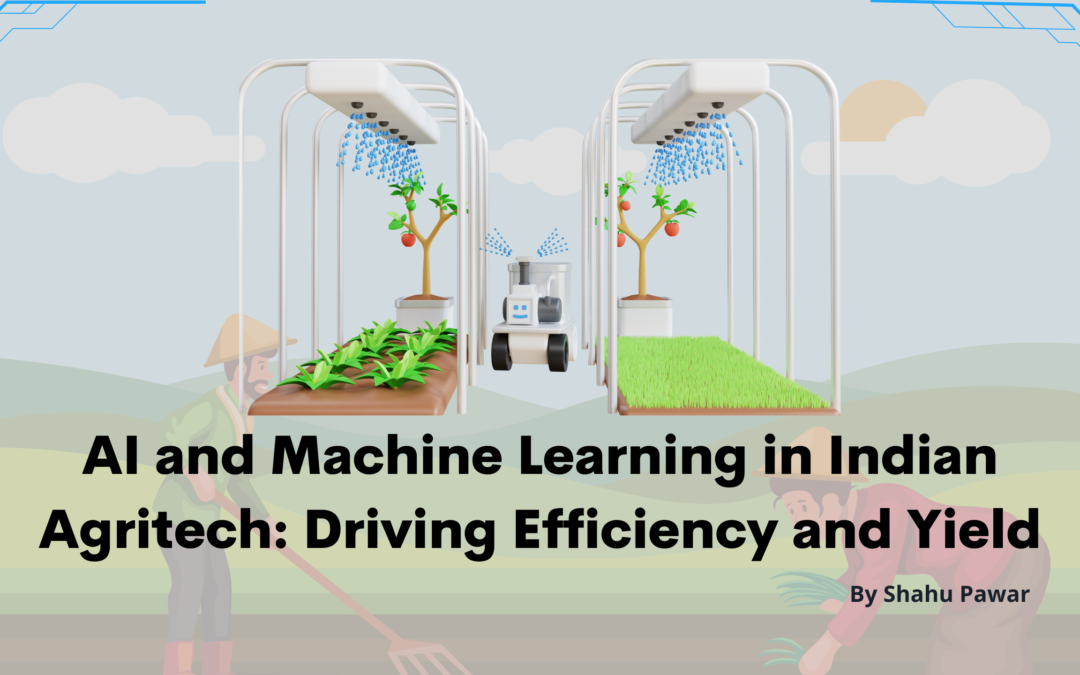Introduction:
Artificial Intelligence (AI) and Machine Learning (ML) are revolutionizing the agricultural sector globally, including in India. The integration of AI and ML technologies in agritech solutions holds great potential for driving efficiency and improving crop yields. This article explores how AI and ML are transforming Indian agritech, enabling precise decision-making, optimizing resource management, and enhancing agricultural productivity.

Crop Monitoring and Disease Detection:
AI and ML algorithms analyze data from various sources such as satellite imagery, drones, and IoT devices to monitor crop health and detect diseases. These technologies can identify subtle changes in plant characteristics and compare them to historical data, enabling early detection and timely intervention. By accurately identifying diseases, farmers can implement targeted measures, minimizing crop losses and reducing the need for excessive pesticide use.
Yield Prediction and Optimization:
AI and ML models leverage historical and real-time data, including weather patterns, soil characteristics, and crop health indicators, to predict crop yields. These predictive models enable farmers to make informed decisions regarding crop selection, planting schedules, and resource allocation. By optimizing the use of inputs like water, fertilizers, and pesticides based on yield predictions, farmers can maximize productivity, minimize costs, and reduce environmental impact.
Smart Irrigation and Resource Management:
AI and ML algorithms enable smart irrigation systems that adjust water application based on real-time weather data, soil moisture levels, and plant requirements. These systems optimize water usage, reduce water stress, and prevent over-irrigation. Additionally, AI-powered resource management tools analyze data on soil fertility, nutrient levels, and crop growth to recommend precise fertilizer application rates, minimizing wastage and improving nutrient use efficiency.
Pest and Weed Management:
AI and ML technologies facilitate precise and targeted pest and weed management strategies. Machine vision systems can identify and classify pests, insects, and weeds, enabling farmers to take appropriate control measures. By accurately identifying pests and weeds, farmers can optimize the use of pesticides and herbicides, reducing environmental impact and preserving beneficial organisms. AI-powered robotic systems can also target and remove weeds without the need for chemical interventions.
Supply Chain Optimization:
AI and ML algorithms optimize the agricultural supply chain by analyzing data on factors such as market demand, transportation logistics, and storage conditions. These technologies help farmers and agribusinesses make informed decisions regarding harvest timing, storage capacity planning, and transportation routes. By streamlining the supply chain, AI and ML drive operational efficiency, reduce post-harvest losses, and ensure better market access for farmers.
Agricultural Advisory Services:
AI and ML-based agricultural advisory services provide personalized recommendations and insights to farmers. These services leverage data on farm-specific conditions, historical patterns, and market trends to deliver customized advice on crop management practices, disease prevention, and market opportunities. By accessing expert advice through AI-powered platforms, farmers can make data-driven decisions, improve productivity, and enhance their economic viability.
Conclusion:
AI and Machine Learning are revolutionizing Indian agritech, offering immense potential for driving efficiency and improving crop yields. Through precise crop monitoring, disease detection, and yield prediction, these technologies enable farmers to optimize resource management and make informed decisions. AI-powered tools for smart irrigation, pest management, and supply chain optimization contribute to sustainable agriculture practices and enhance farmers’ profitability. Continued investment in AI and ML research, infrastructure development, and farmer education is crucial to unlock the full potential of these technologies and driving the future of Indian agritech.

